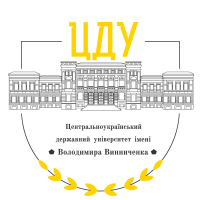REPRESENTATION OF GENDER RELATIONS IN SPORTS MEDIA
Keywords:
gender relations, linguistic worldview, discourse, communication, femininity, masculinity, textualization.Abstract
The article is devoted to the problem of modern linguistics - gender relations. The problems of language and gender have become relevant in modern linguistics. Linguists consider gender as a phenomenon of culture and language; study the refraction of this category in language. Scientists consider gender to be a sociocultural category; their works touch upon the issues of oral and written communication. They researched general patterns of gender development, gender relations in linguistics, and concepts in the light of gender stereotypes. But the problem of studying gender relations in sports media in a comparative aspect was not touched upon in the works of linguists. Significant contributions to the construction of gender were made by the mass media. The media shape gender attitudes for both men and women and assign them specific gender roles. Sports text is a multilevel communicative constructor. It reflects the communicative intentions of sports actors – athletes, coaches, competition judges, sports administrators, fans, and sports commentators. The phraseological and lexical fund of the German and Russian languages was used to analyze the research data. After analyzing the material we have chosen, that most of the articles are devoted to men's sports - 76.5% and only 23.5% - to women's. We determined that the morphological way of forming words (suffix and addition) prevails in sports publications. So, we have noted that for designation a person's sex in borrowed words, native speakers of the Russian language resort to the syntactic method, that is, the formulation of the predicate in the desired form. In German language, a predicate cannot be an indicator of gender. We can reveal belonging to one or another gender only through introductory nominations (weiblich, männlich, Frauen-, Männer-) or the names of athletes.Over time, the stereotypes that were created in society are changing, because our life does not stand still, and women are increasingly becoming on a par with men.
References
Дорошенко, С.М. Гендерні особливості спілкування / С.М. Дорошенко // Materialy VII mezinarodni vedecko-prakticka conference «Moderni vymozcnosti vedy – 2012». – Dil.19.Filologicke vedy.– «Praha publishing house Education and science” s.r.o. – Str.75-78.
Кирилина, А.В. Гендер: лингвистические аспекты/ А.В. Кирилина. – М.: Институт социологии РАН, 1999. – 189 с.
Козуб, Г. Фразеологическая и образно-метафорическая репрезентация концепта Футбол в русской и немецкой лингвокультурах / Г.Козуб, М. Ольховик // Наукові записки.– Вип. 167.– Серія: Філологічні науки. – Кропивницький: Код, 2020. – С. 459-465.
Малишевская, Д. Концепты в свете гендерного подхода (на примере оппозиции мужчина/женщина) / Д.Малишевская // Фразеология в контексте культуры. – М., 1999. – С. 56-64.
Савицька, Л. Мова і стать / Л. Савицька // Критика. – 2003. – № 6. – C. 29-34.
Суханова,Т.В. Современные тенденции развития гендерных исследований в лингвистике / Т.В. Суханова // Русский язык в диалоге культур: материалы международной научной конференции. Ч.2. – Воронеж, 2010. – 85- 90 с.
Юнг, К.Г. Душа и миф. Шесть архетипов / К.Г. Юнг. – М.-К.: ЗАО «Совершенство» – «Port-Royal», 1997. – 384 c.








